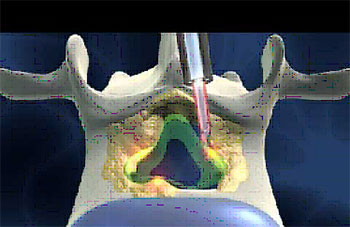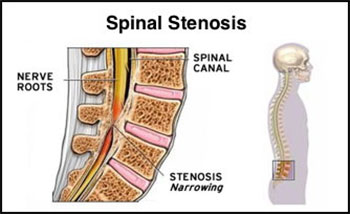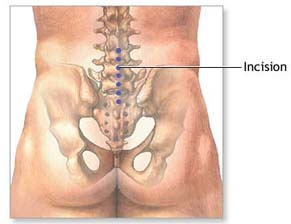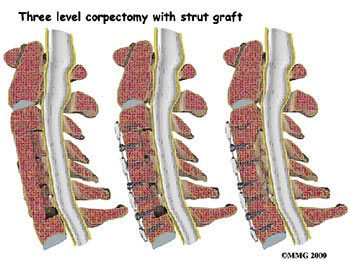Spinal stenosis is a narrowing of spaces in the (spine) that result in increased pressure on the spine or nerve roots. This issue when in doubt incorporates the narrowing of one or a more prominent measure of three zones of the spine: the direct in the point of convergence of the area of bones (vertebral or spinal portion) through which the spinal cord and nerve roots run, the trenches at the base or establishments of nerves extending

from the spinal rope, or the openings between vertebrae (bones of the spine) through which nerves leave the spine and go to diverse parts of the body. The narrowing may incorporate a little or considerable region of the spine. Increased pressure on the lower region of the spinal cord or on nerve roots extending from that range may offer rising to pain or deadness in the legs.

Laminectomy: The most widely recognized sort of surgery for this condition, laminectomy includes the evacuation of the lamina, a part of the vertebra, to make space for the nerves. A few ligaments and bone goads might likewise be uprooted. The surgery obliges making a cut into the back. Foraminotomy: The foramen is the range in the vertebrae where the nerve roots exit. The methodology includes extending this range to give more space to the nerve roots.
Spinal combination: This methodology is done in instances of precariousness and includes joining the bones together with screws or bone unions to give spinal stability. It might be joined with laminectomy surgery. The surgery keeps going a few hours and should be possible utilizing one of two routines:
Bone is expelled from somewhere else in the body or acquired from a bone bank. This bone is utilized to make a frame in the middle of vertebrae and empowers the development of new bone. Metal inserts, for example, poles, snares, wires, or screws, are secured to the vertebrae to hold them together until new bone develops between them.
The most widely recognized indications of lumbar spinal stenosis incorporate leg pain (sciatica) that may be joined by:
Normal Symptoms of Spinal Stenosis:

Leg pain with strolling (claudication) can be brought about by either blood vessel circulatory inadequacy (vascular claudication) or from spinal stenosis (neurogenic or pseudo-claudication). Leg pain from either condition will run away with rest, however with spinal stenosis the patient more often than not needs to take a seat for a couple of minutes to facilitate the leg and regularly low back agony, though leg pain from vascular claudication will go away if the patient essentially quits strolling.
Other than being accompanied by the leg pain, stenosis indications will go ahead intensely; they by and large grow through the span of quite a long while. The more extended a patient with spinal stenosis stands up or walks, the more terrible the pain will get.

While the expression "stenosis" originates from Greek and signifies "gagging," spinal stenosis, on the other hand, has little just the same as stifling.
There are two sorts of spinal stenosis: lumbar stenosis and cervical stenosis. While lumbar spinal stenosis is more basic, cervical spinal stenosis is regularly more unsafe in light of the fact that it includes pressure of the spinal cord, as clarified beneath in more detail. The objective of spinal stenosis surgery is to forever decompress the spinal stream.
There are non surgical ways also suggested by a few doctors. For example, some patients might not require a spinal surgery and they might get themselves treated through physiotherapy and medicines. Please follow the instructions of your general practitioner to move ahead.